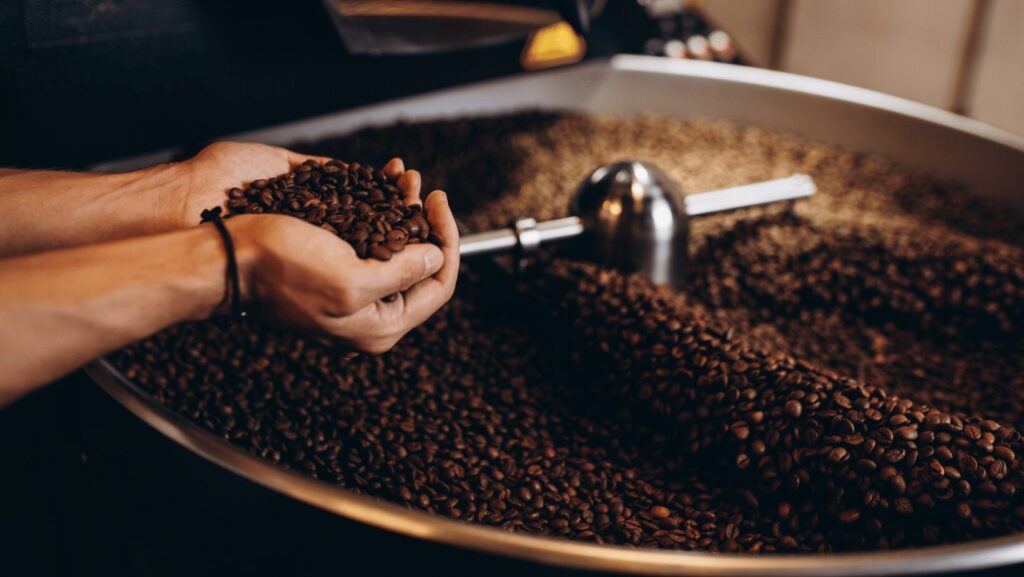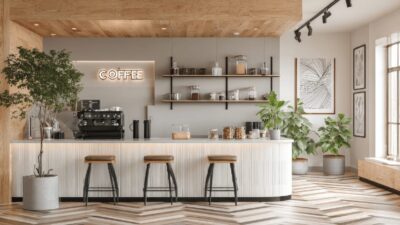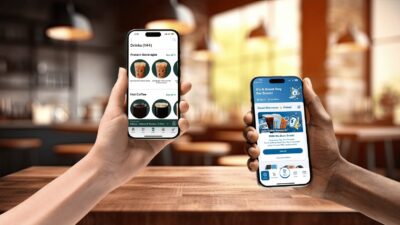One of the most important decisions you’ll make as a coffee shop owner?
The type of coffee beans you use.
Your shop’s coffee beans directly affect the taste of your coffee, how much you charge for it, and customer loyalty (because real coffee lovers do care about the beans you use!).
In this beginner’s guide, we’ll go through all things coffee beans, including the roast types coffee beans can have, the different types of coffee beans that exist, and what you might want to keep in mind when picking which coffee beans your shop uses.
We’ve also created a quiz to help you decide which type of coffee beans you might want to sell at your coffee shop — because good beans = great coffee = better business.
What are the different types of coffee bean roasts?
The way coffee beans are roasted can impact their taste, from acidity and flavor notes to body and brightness.
(The type of coffee bean you’re using also impacts this stuff, but more on that later!)
According to Methodical Coffee, roasting is a spectrum; “[just] like you could cook a steak as rare or as well-done as you’d like, coffee can be roasted as light or dark as you’d prefer.”
That said, there are three commonly used markers for roasting coffee beans — light, medium, and dark roast — and here are their differences.
| Light roast coffee beans | Medium roast coffee beans | Dark roast coffee beans | |
| Acidity | High | Lower | Lowest |
| Color | Light brown | Brown | Dark brown/black |
| Oil Level | None | Some | High |
| Body | Bright, light-bodied | Balanced, full-bodied | Rich, full-bodied |
| Flavor | Keeps the origin characteristics of the coffee bean | Mixes roasted flavor with origin characteristics | More bitter/roast aromas, very little origin characteristics |
| General Tasting Notes | Floral and fruity | Caramel | Chocolate and caramel-y |
| Caffeine Level | Same | Same | Same |
While this chart highlights the general differences between light, medium, and dark roast coffee beans, remember that there are no hard and fast “rules” about coffee roasting.
Individual coffee roasters may use different definitions or markers of what constitutes a light, medium, or dark roast, so make sure to thoroughly try out the coffee beans you’re using before going all-in.
What are the different types of coffee beans?
There are four different types of coffee beans: Arabica, Robusta, Liberica, and Excelsa.
Here’s a quick overview of each of them, including what they’re known for, where they’re grown, and what they’re best used for.
Arabica (Coffea arabica)
Arabica is one of the most common types of coffee beans, making up at least 60% of coffee production worldwide.
This type of coffee bean is thought to have originated in Ethiopia, but is now grown in other hot, high-altitude countries such as Guatemala, Colombia, and Brazil — the world’s largest Arabica producer.
Arabica has a sweet, delicate flavor, featuring notes of fruit, caramel, and nuts. It’s also slightly acidic compared to other beans, resulting in a bright, tangy coffee (especially with lighter roasts).
One important consideration for using Arabica coffee beans is how much they cost — which is more now than ever before. In 2025, Arabica beans exceeded 4 USD per pound, more than a 70% increase from last year, and the highest cost in the last 45 years.
Arabica is a good choice for premium coffee shops that aren’t afraid of the slightly higher cost per pound. The light, fruity notes of this coffee make it a great candidate for milk-based drinks like lattes and cappuccinos, too.
Robusta (Coffea canephora)
Robusta is another common type of coffee bean, responsible for ~30% of coffee production worldwide.
This type of coffee bean is said to have originated in Central and Western Africa, but is now grown around the world. Over 90% of Robusta coffee today comes from Vietnam, Brazil, Indonesia, Uganda, and India.
Robusta has a strong, “harsh” flavor, delivering notes of chocolate and nuts with a bitterness that is especially accentuated in dark roasts. It also has a low acidity, which makes for a smooth, mellow-tasting coffee.
One notable feature of Robusta is that it’s less expensive than Arabica, not because it’s “worse,” but because it’s cheaper to produce reliably. Robusta beans are hardier than Arabica beans, making them less susceptible to drought and more pest-resistant.
Robusta is a good choice for value-driven coffee shops that don’t want to spend their entire budget on beans alone. Because of its strong, bold taste, it makes great espresso drinks, and won’t taste watered down in iced drinks, either.
Liberica (Coffea liberica)
Liberica is a less common type of coffee bean, responsible for between 1 and 2% of coffee production worldwide.
This type of coffee bean originated in West Africa, but in the 1990s, Liberica crops were transplanted to Asia to supplement lost Arabica crops. Now, Indonesia, Malaysia, and the Philippines are the largest Liberica producers in the world.
Liberica has a unique, strong flavor, said to taste floral, smoky, and “woody.” Some people say Liberica is sweeter than other varieties, while others say its strength is actually overpowering, because it’s bolder than Robusta.
While Liberica is an interesting type of coffee bean, it’s not very common. Its limited growing region and difficult harvesting process make it difficult to produce at a global level, so getting to try Liberica is a real treat.
Liberica isn’t currently common, but there’s a growing interest from consumers wanting to try the elusive coffee. Very few coffee roasters right now sell Liberica, so you’ll have to do some digging to find beans in your region!
Excelsa (Coffea liberica var. dewevrei)
Excelsa, a variety of Liberica, is the rarest type of coffee bean, responsible for less than 1% of coffee production worldwide.
This type of coffee bean originated in West Africa, originally categorized as its own species, Coffea dewevrei. Then, in 2006, Excelsa was reclassified as a variety of Liberica — although its uniqueness means many people still classify it independently.
Excelsa has a completely different flavor profile from Liberica, featuring bitter, sweet, and sour flavors. It’s said to be very fruity and floral, with smoky, tangy undertones and mild acidity — a blend of features from light and dark roasts.
Much like Liberica, Excelsa coffee isn’t very common in the US right now due to the same growing limitations. However, its unique flavor profile is making more and more consumers interested in trying it out.
You may be able to find Excelsa coffee beans at specialty roasters in your area or online, but you’ll likely have to do some research to find them. Although from what we’ve heard about Excelsa, the effort is totally worth it!
What is the best type of coffee bean for your shop?
When it comes to choosing the type of coffee bean your shop uses, there is no magic answer or universal best.
The type of coffee bean that’s best for your shop depends on unique-to-you factors, including:
- Your customer base
- Are they price-conscious coffee drinkers, preferring whatever choice leads to a cheaper cup of coffee?
- Are they luxury-seekers who wouldn’t mind paying a premium for hard-to-find coffee beans?
- Your brand
- Are you focused more on serving a high volume of customers across all demographics and preferences?
- Are you aiming for a more “artisan” experience, where fewer people visit at a higher price point?
- Your drinks
- Are you focused on classic, simple drinks that would really help unique coffee beans shine?
- Are you focused on specialty drinks, where your non-coffee ingredients matter more than the coffee beans?
If your answers to these questions don’t leave you with a clear winner, there are tons of experiments you can run to let your customers tell you the types of coffee beans they like best.
✔ Host a focus group — Invite your most loyal customers to taste test drinks made with different types of coffee beans and get real-time feedback on the ones they like best.
✔ Try a “Bean of the Month” strategy — Switch up the types of coffee beans you use every month, asking customers for feedback on which they like the best (and the least).
✔ Try out multiple beans at the same time — If you can, let customers choose which coffee beans their drinks are made with. Then, use your POS data to track which one sells the best.
And, if you’re still not sure where to start? Try our free Ultimate Coffee Bean Quiz to see which type of coffee bean you might want to try out first.
Happy brewing!




